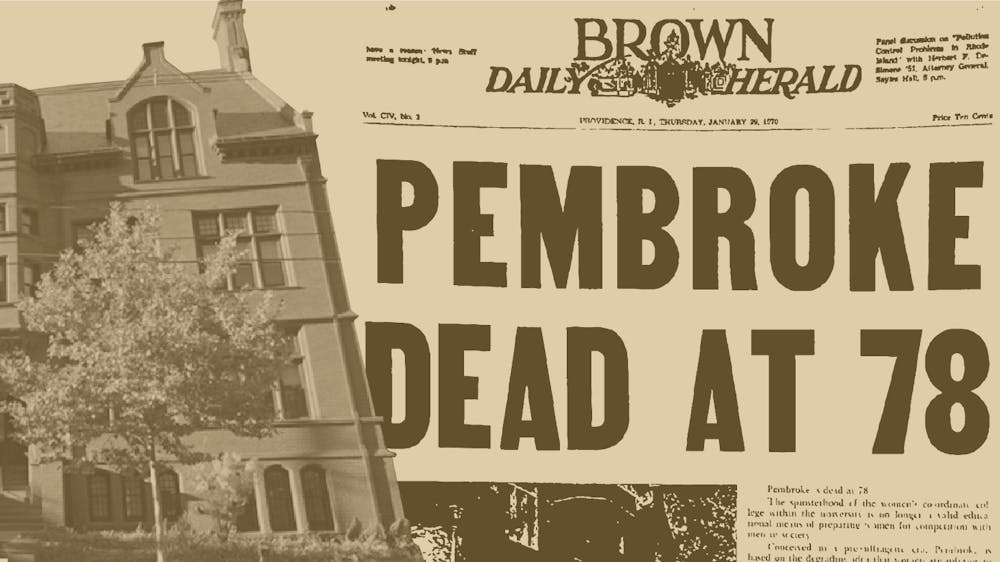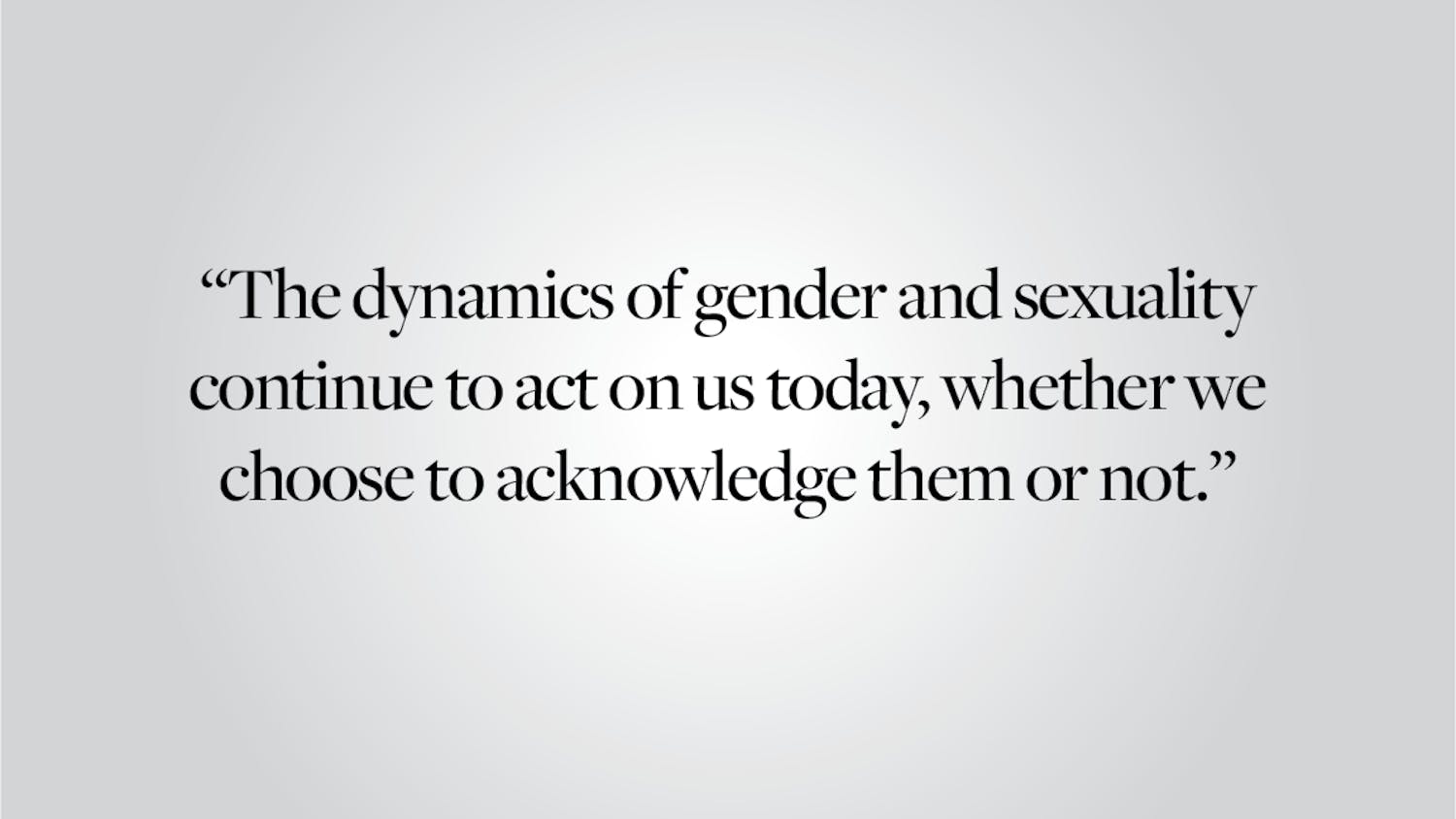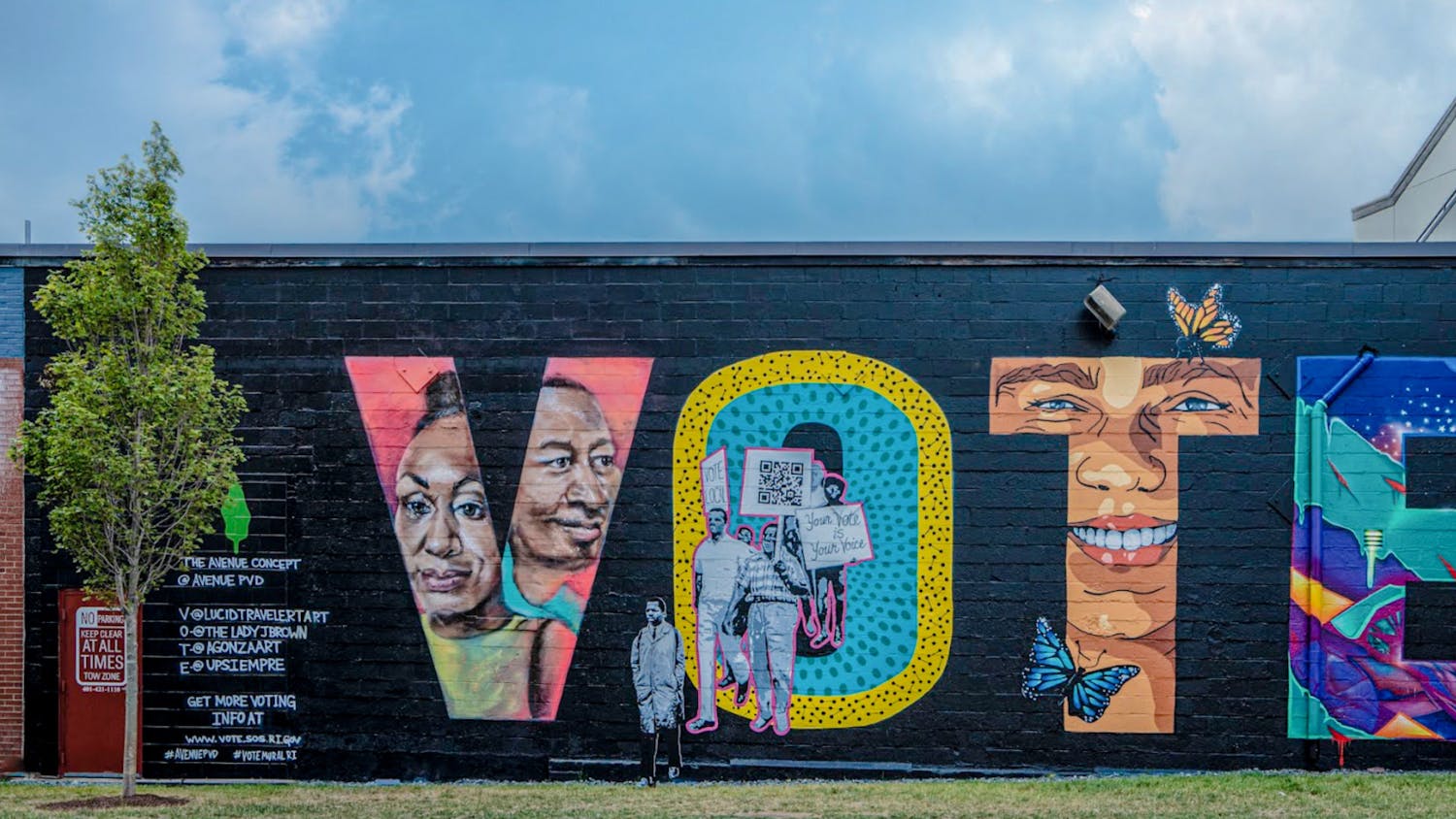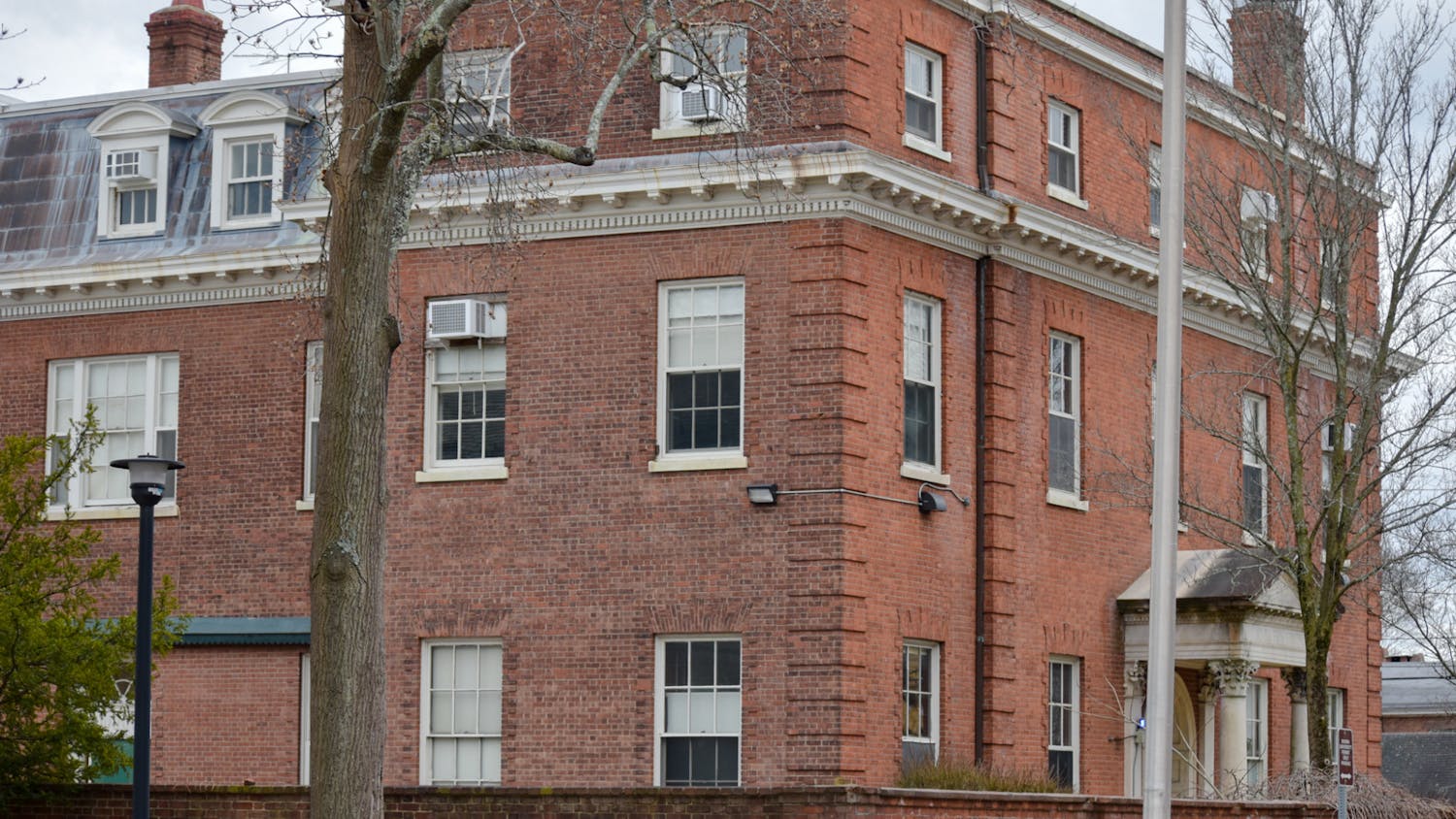On July 1, 1971, Brown University fully with its sister institution, Pembroke College.¬Ý
This move followed a towards co-education that saw the consolidation of women’s colleges with their all-male counterparts and the admission of men into previously all-women’s colleges.
The merger also ran parallel to a period of cultural upheaval brought about by the civil rights movement, the Vietnam War and generational challenges to authority and tradition.
The Herald spoke to seven Pembroke alums about life for women on College Hill at the time of the merger and their continuing connection to Pembroke today.
Different standards and access to resources
— founded in 1891 and renamed Pembroke College in Brown University in 1928 — saw its first cohort of women graduate in 1894.
Equipped with a separate campus one-eighth of a mile from Brown’s main campus, Pembroke was overseen by the Dean of Pembroke College. But as Brown’s coordinate college, it remained under the control of the , the University’s highest governing body.
Barron’s 1969 “Profiles of American Colleges” noted that Pembroke women were offered the same courses as male students and all classes were co-ed. Men and women received the same University degrees.
But for Beverly Hodgson ’70 P’01 P’07, the resources offered to Pembroke students were vastly different from and limited in comparison to Brown students. She explained that Brown had a daily student newspaper, whereas Pembroke’s was only published weekly. The , which granted funding to seniors for independent projects, was also only open to men. And before , which prohibits sex-based discrimination in institutions receiving federal funding, Pembroke had inferior athletic facilities.
“The Pembroke deans did not seem very committed to fostering ambition in women,” Hodgson wrote in an email to The Herald. “Though I was the editor of The Herald and a junior year member of Phi Beta Kappa, the dean who was supposed to counsel me on a career thought I should think of a job in the buyer ranks of a department store — the kind of job that earlier generations of women had taken until marriage.”
Pembroke women were also assigned stricter dress codes and parietal rules than their male co-years. Jeanne Ellis Ormrod ’70 recalled being told in her first year that “we could wear pants on the Pembroke campus (while) we had to wear skirts and dresses on the Brown campus.”
Jaclynne Laxon ’66 P’01 described a “bitter February night” during her time at Pembroke when she was asked to leave the library because she wore slacks instead of a dress due to the cold weather. A librarian told her she was “dressed inappropriately for the Brown campus.”
In an email to The Herald, Barbara Traver ’70 wrote that the University acted “in loco parentis,” or in the place of a parent, setting strict curfews for Pembroke students and preventing men and women from visiting each others’ dorms outside certain hours.
“You got into trouble if you violated the parietal rules,” Laxon explained. “One girl on my floor … stayed out all night and she was dismissed for a semester.”
Hodgson recalled an instance when a Pembroke student was expelled for staying overnight at her boyfriend‚Äôs off-campus apartment. Her boyfriend, who was a Brown student, did not face any disciplinary action.¬Ý
Hodgson said Pembroke students marched to protest the expulsion as part of a nascent movement to demand equal treatment and less restrictive rules.
‚ÄúThe Pembroke deans were slow to recognize that an increasing number of women students were feminists and were not in the mold of earlier classes,‚Äù Hodgson wrote.¬Ý
A ‘diminishing’ feeling of identification
In fall 1969, the Corporation created the Pembroke Study Committee. Consisting of Corporation members, students and faculty members, the committee was charged with analyzing “facets of University life affecting the education of women at Brown” and making recommendations to the University about “modifications in the present organization of education for women,” according to the committee’s May 1970 report.
In a Nov. 20, 1970 letter addressed to Pembroke alums, Rosemary Pierrel PhD’53 — then dean of Pembroke — cited “the rapidly changing attitudes and events on the campus” as the reason for the committee's creation.
The committee’s report observed that Pembroke students had “drifted toward integrated university activities rather than to strictly female pursuits,” leading to a “diminishing” feeling of identification with Pembroke.
In its final recommendations, the committee suggested the Corporation merge Pembroke and Brown’s admissions, counseling, housing and placement services, noting that the Pembroke services performed “the same functions as their parallel offices at the College.”
The motion was adopted by the Corporation, leading to the merger in 1971.¬Ý
Hodgson, who served on the committee, wrote that the group recommended the “use of co-ed dorms to enable an increase in women” students. Before the merger, the ratio of men to women students was roughly 3-to-1, with enrolled. By fall 1972, that ratio had fallen to about 2-to-1, with enrolled.
According to Hodgson, having more women in classes ‚Äî and within a larger student body ‚Äî allowed women students to play a greater role in larger student organizations.¬Ý
The merging also created “a single deanery … looking out for the whole student body, as opposed to the superior one looking out for men and the adjunct one looking out for women,” she said.
The University began regarding women students “much more equally and less as a sideline.”
‘A backdrop of upheaval across the country’
Pembroke alums from the class of 1970 recall a gradual easing of restrictions imposed on female students in the leadup to the merger — a change fueled by the cultural events at the time.
“The era from 1966 to my graduation year, 1970, was the era of the Vietnam War and of uprisings by students who found themselves subject to being drafted into a war they did not support,” Hodgson wrote.
Ronnie Dane ’70 said that the Vietnam War, civil rights activism and the women’s rights movement created “a backdrop of upheaval across the country,” particularly on college campuses.
According to Hodgson, an increasing contempt for government policies caused students to start questioning authority within institutions. ‚ÄúStudents began demanding roles in University governance and, famously, in curriculum, with a huge push to install the ‚ÄòNew Curriculum‚Äô based on students‚Äô choices and interests rather than on required courses,‚Äù Hodgson wrote.¬Ý
“We were at the end of an era … in the middle of a seismic shift in campus life and standards,” said Judy Griemsmann ’66.
Reflecting on the merger of 1971, Ormrod said that “combining the two colleges into one went hand-in-hand with all the cultural and social changes that were happening.”
‚ÄúThe vanishing of societal restrictions made the merger ‚Ķ almost an afterthought‚Äù as women were no longer ‚Äúguarded like a separate, delicate and exotic species,‚Äù Traver said.¬Ý
‘A legacy of being Pembrokers’
Every class reunion, Margaret Genovese ’70 hosts a Pembroke Breakfast exclusively for the women graduates of her class of 1970.
“It's a way for me to see my people, the other Pembrokers,” she said. “We all have experiences of having bonded as female students within a larger university that was predominantly male.”
‚ÄúWe have this enormous allegiance to the school that accepted us, which was Pembroke College,‚Äù she added.¬Ý
Genovese explained that the breakfast serves as a tribute to the history of Pembroke College, as well as to the women that came before her and ‚Äúfought against prejudice, male chauvinism and not being paid equally as academics.‚Äù¬Ý
“These women were survivors … (and) pioneers,” she said.
Alums from the class of 1966 also have a unique way of staying connected with their Pembroke roots: monthly Zoom meetings.
The first virtual meeting took place during the class of 1966’s 55th reunion, which was held on Zoom. “We started chatting and we had so much fun,” Griemsmann said. “We don’t have to wait for our next reunion to do this.”
The Zoom calls are about 90 minutes each, and 10 to 12 women drop by each month, according to Laxon.¬Ý
At Pembroke, the students would meet “every night” in their dorms and over dinner. For Griemsmann, these monthly Zoom meetings are “a legacy of being Pembrokers.”
“I'm a proud Brown graduate,” Genovese said. “But I also have a very special part of my heart belonging to the fact that I was a Pembroker.”
Bishakha Oli is a staff writer for the University News section covering the diversity and student groups beats. In her free time, she enjoys learning new languages and making ceramic bowls!




